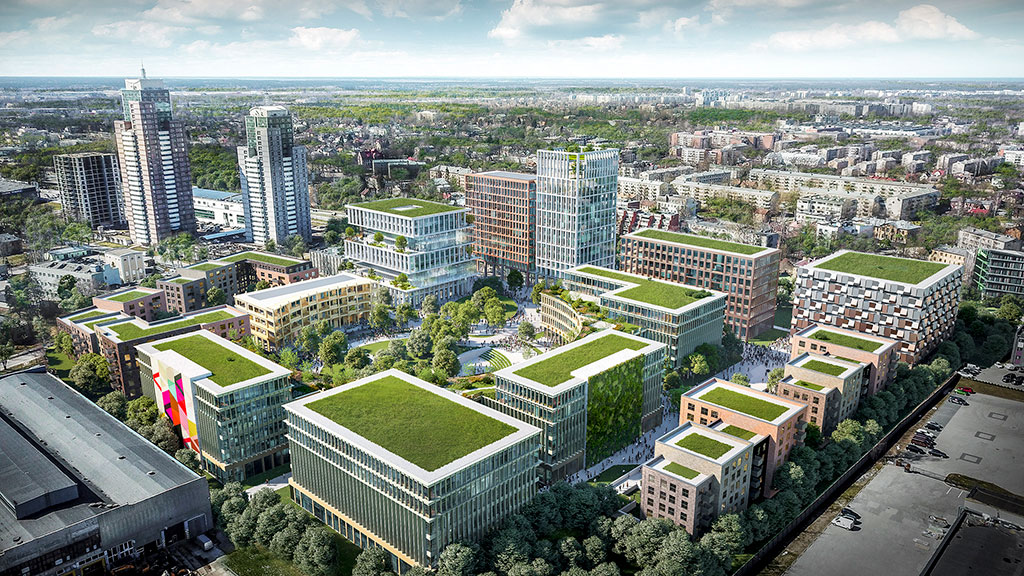In recent years, cities across the Gulf region have taken bold steps toward becoming global leaders in sustainable urban development. From eco-friendly buildings and clean energy to advanced transport and green public spaces, these cities are proving that economic growth and environmental care can go hand in hand.
While many urban centers around the world struggle with pollution, traffic, and climate change, Gulf cities like Dubai, Abu Dhabi, Riyadh, and Doha are embracing innovation to create greener and smarter futures. They are not just adapting to change—they are driving it.
Let’s explore how these cities are becoming pioneers of sustainable urban living, setting examples for the world to follow.
Eco-Friendly Architecture Is Changing Skylines
One of the biggest changes in Gulf cities is the way buildings are being designed. Traditional high-rises are being replaced or upgraded with structures that use less energy and water, produce less waste, and rely more on natural light and cooling systems.

For example, the famous Masdar City in Abu Dhabi was built to be a carbon-neutral city powered entirely by renewable energy. Though it’s still developing, it has become a symbol of what’s possible. In Dubai, more new buildings are meeting green building standards that reduce their environmental impact.
Green rooftops, solar panels, and smart glass that reflects sunlight are becoming more common. These design features help cut down on air conditioning use and electricity costs—two major issues in hot desert climates.
Renewable Energy Is Powering the Future
The Gulf region, long known for its oil reserves, is now investing heavily in clean energy sources like solar and wind. Countries like the UAE and Saudi Arabia are leading this transition with ambitious plans to reduce their dependence on fossil fuels.
The Mohammed bin Rashid Al Maktoum Solar Park in Dubai is one of the largest solar projects in the world. Saudi Arabia is developing NEOM, a futuristic smart city powered by 100% renewable energy. These projects show how the region is not just preparing for the future—it’s building it today.
By turning sunlight into energy, Gulf cities are proving that even the harshest climates can support clean, green living.
Smart Transportation Is Reducing Emissions
Another key part of the Gulf’s sustainable shift is in transportation. With growing populations and expanding urban areas, smart and clean transport solutions are essential.
Dubai already has a modern metro system and is planning to expand it further. Electric buses, driverless taxis, and bike-sharing stations are becoming more common. In Saudi Arabia, the new Riyadh Metro is set to provide a cleaner alternative to car travel, helping to cut down emissions in the capital.
Investments in electric vehicle infrastructure are also increasing, making it easier for residents to switch from gasoline-powered cars to greener alternatives.
Greener Spaces Are Improving City Life
Sustainability isn’t just about buildings and energy—it’s also about how people live and connect with nature. Gulf cities are now making green public spaces a top priority.

Parks, walking trails, and mangrove reserves are being developed or expanded across the region. In Abu Dhabi, Jubail Mangrove Park is a great example of how cities can protect nature while giving people a peaceful space to enjoy.
In Doha, the Msheireb Downtown project includes shaded streets, open-air cooling systems, and tree-lined walkways that encourage walking and outdoor living—even in hot weather.
These spaces not only help the environment but also improve mental health, reduce stress, and build stronger communities.
Waste Reduction and Water Management Are Key
Gulf cities are also becoming smarter about how they manage waste and water. New technologies are being used to recycle water for landscaping, clean sewage more efficiently, and reduce plastic and food waste.
Dubai’s “Zero Waste” goal aims to reduce the amount of waste sent to landfills and encourage recycling and composting. In Saudi Arabia, smart irrigation systems are being used to water public gardens more efficiently.
These innovations help save valuable resources and support a healthier, cleaner environment for future generations.
Education and Innovation Are Driving Change
One reason Gulf cities are moving ahead in sustainability is because of strong leadership and a focus on education. Governments are supporting innovation hubs, green startups, and research centers that focus on new solutions for energy, climate, and urban design.
Young people are being encouraged to join the green movement through school programs, university research, and public campaigns. Social media and community events also play a big role in spreading awareness and inspiring everyday citizens to make more eco-friendly choices.
This culture of innovation means that new ideas are constantly being tested and applied across the cities—from vertical farms to algae-based biofuels.
Sustainability Is Becoming a Way of Life
What makes the Gulf region stand out is how deeply sustainability is being woven into every part of life. It’s no longer just about one or two green buildings or parks. It’s about a new mindset where cities are built to last, grow, and protect the planet at the same time.
People are now seeing electric vehicles in their neighborhoods, recycling bins in shopping malls, and solar panels on rooftops. These changes show that sustainability is becoming a normal, everyday part of life in the Gulf.
A Blueprint for the World
Gulf cities are proving that with strong vision, smart planning, and the right investments, it’s possible to create urban environments that are not only livable and modern but also sustainable.
While challenges remain—like managing water in a dry climate or encouraging more people to use public transport—the progress so far is impressive. These cities are showing that it’s possible to grow quickly and responsibly at the same time.
As the world continues to search for ways to fight climate change and build better cities, the Gulf region is providing a powerful example of how to get it done.
Also read: Digital Banking is Changing the Future of Gulf Economies



